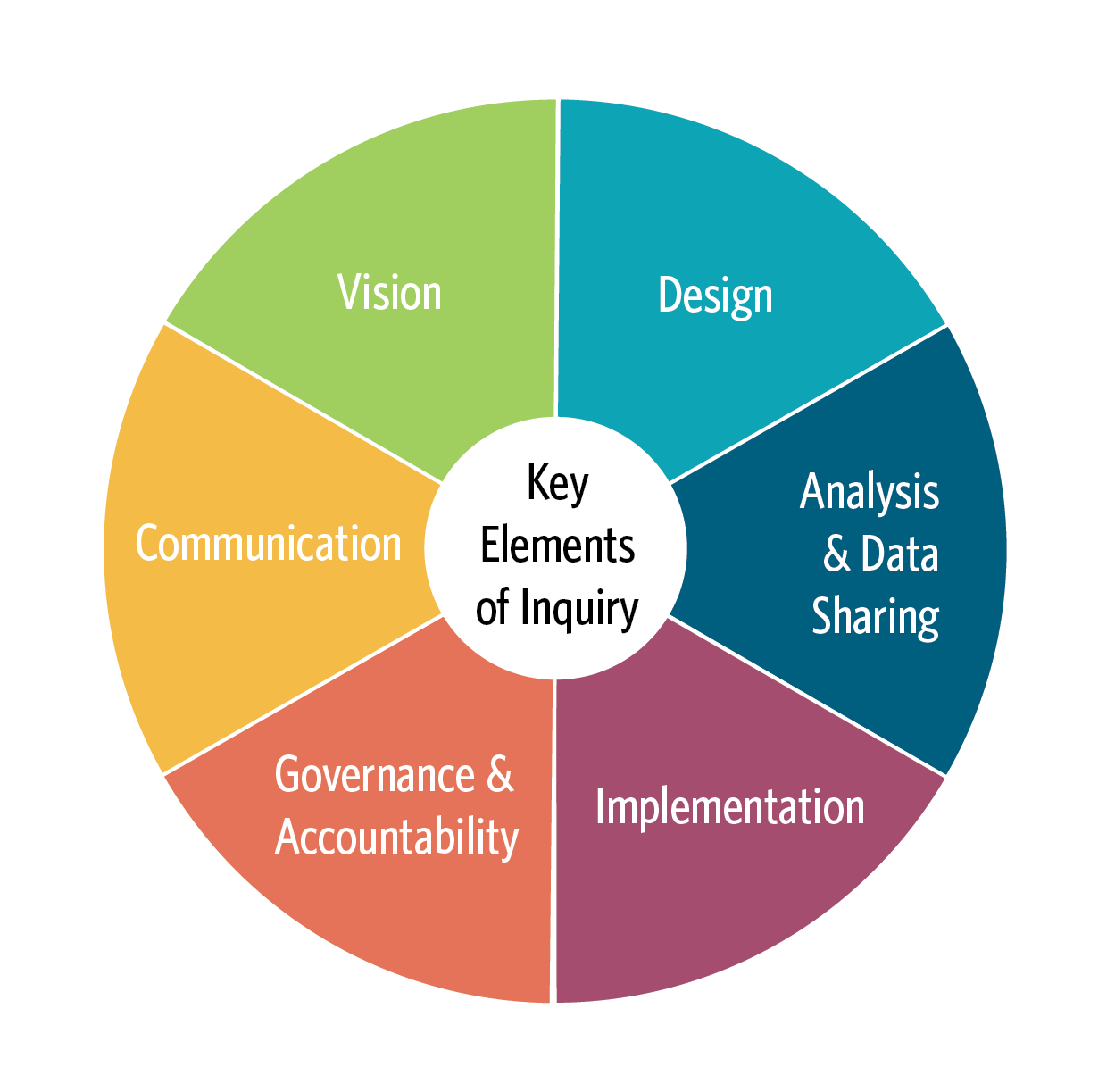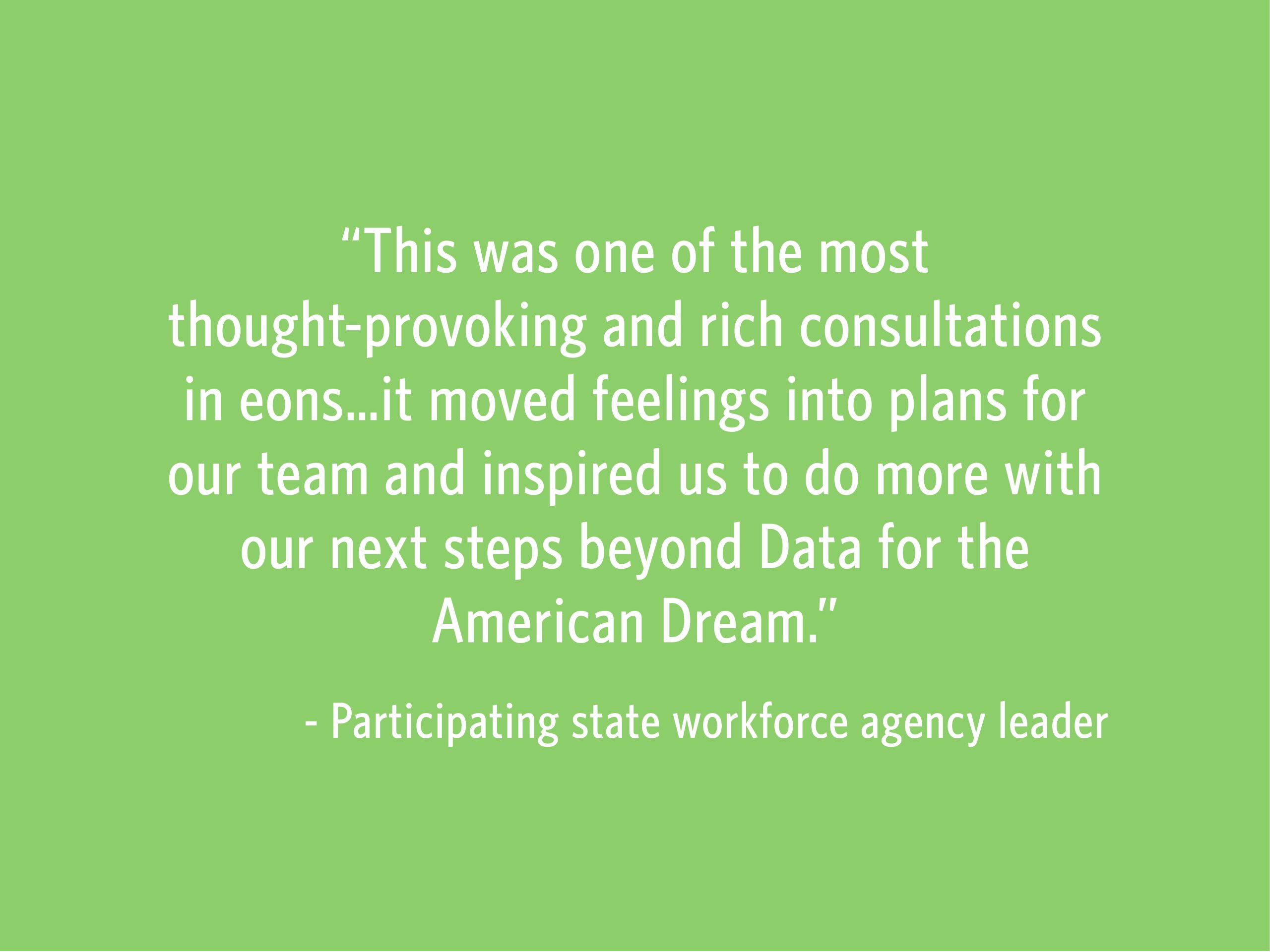Building Data Equity Capacity to Support Workers
PARTNER: Data for the American Dream, National Center for Higher Education Management Systems
SERVICE AREA: ADEI & Continuous Improvement
LOCATION: New Jersey, Colorado, and Michigan
TIMEFRAME: 2021
The Challenge
Well-intentioned application development and data analysis can still be designed with biases and continue to promote inequities. The Data for the American Dream project wanted to ensure the capacity-building investments it was making with state workforce agencies shined a light on equitable data design practices in a way that was supportive to the organizations doing the work.
The Solution
Working closely with the Data for the American Dream team, we deployed an initial, quick data equity assessment with each of the three state workforce agencies, specifically looking at their co-design processes, application language, information feedback loops, and accountability structures. We then used this assessment to design a series of individual and group coaching sessions with the workforce agencies specific to the challenges each agency faced. The assessment framework and coaching materials were based on our own equity framework, as well as the frameworks and teachings of the Design Justice Network and organizations including Data 4 Black Lives, the Algorithmic Justice League, and National Equity Project.

Key Equity Assessment
Inquiry Elements
The Impact
As people continue to seek meaningful employment and learning opportunities, especially in the wake of COVID-19, the Data for the American Dream states will leverage and improve their workforce technologies to best serve their residents, whether they are returning to work or seeking employment for the first time.
Participants in these sessions walked away with greater knowledge on the use of asset based language. Each agency also created user-centered feedback loop processes to hold themselves accountable to the continuous improvement of their apps based on the needs of the communities they serve.
